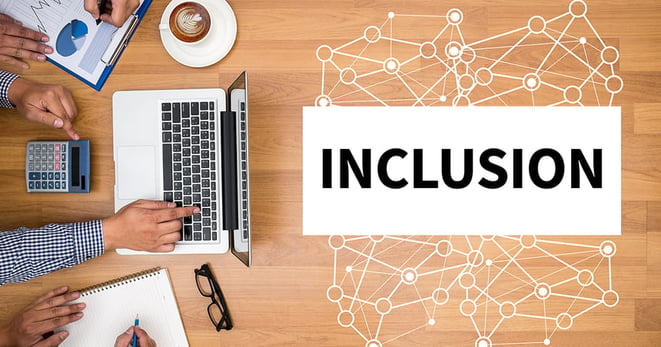Financial Inclusion, Compliance, and Technology
by Kristina Drye, on Aug 4, 2022 12:37:34 PM
 one photo/shutterstock.com
one photo/shutterstock.com
There are many characteristics that define a stable, healthy economy. One of these is financial inclusion - the availability and equality of opportunities to access financial services. This means that everyone, regardless of gender, sex, race, or financial history, has a chance to receive loans, mortgages, banking services, and credit.
Unfortunately, the history of debt and credit is full of discrimination. Women weren’t allowed a credit card without a male co-signer until 1974, the same time that discrimination by race for credit cards was formally abolished. Women who did not keep clean houses were considered credit risks; male laborers were also considered credit risks because their income was not deemed stable. Many non-white, non-male populations could not get loans, build credit, or operate with financial independence until very recently.
Additionally, these issues are compounded by geographical problems. Credit risks and mortgages are determined by the neighborhood and zip code in which the applicant lives; redlining, or the practice of withholding services from potential customers who reside in neighborhoods classified as “hazardous” to investment, further entrenches marginalized communities in lives of unstable finance.
 Angelina Bambina/shutterstock.com
Angelina Bambina/shutterstock.com
Artificial intelligence, advanced technology, and financial technology organizations offer a necessary solution to these problems.
First, AI can sort nontraditional sources of data quickly to produce assessments of risk that are not reliant on traditional data sources to produce credit scores. Traditionally, credit scores are based on how well a citizen services debt; without a history of debt, credit scores are low or nonexistent. Using nontraditional data, including payments on rent or utilities, AI offers an opportunity to redefine the data used to determine credit reliability.
Second, AI can assess risk using a whole-of-internet approach. While the unbanked need to be banked, the risk of onboarding these clients needs to match the risk appetite of the lender. Using traditional lists and data sources limits the precision of risk calculated. Using the full internet, including websites in alternative languages and social media, those populations testing the risk appetite of financial institutions can be ethically and appropriately screened and vetted, expanding financial inclusion while protecting the financial institution.
There are many steps that have to be taken to help AI help others. AI does not achieve this alone - in addition to employing fintechs and algorithms to assess risk in new ways, we must increase diversity in the tech field and bias-test the technology to ensure it improves upon traditional processes. But the potential is there, and with AI, we can begin to take steps toward a true environment of financial inclusion.
Learn more about how GOST can help




